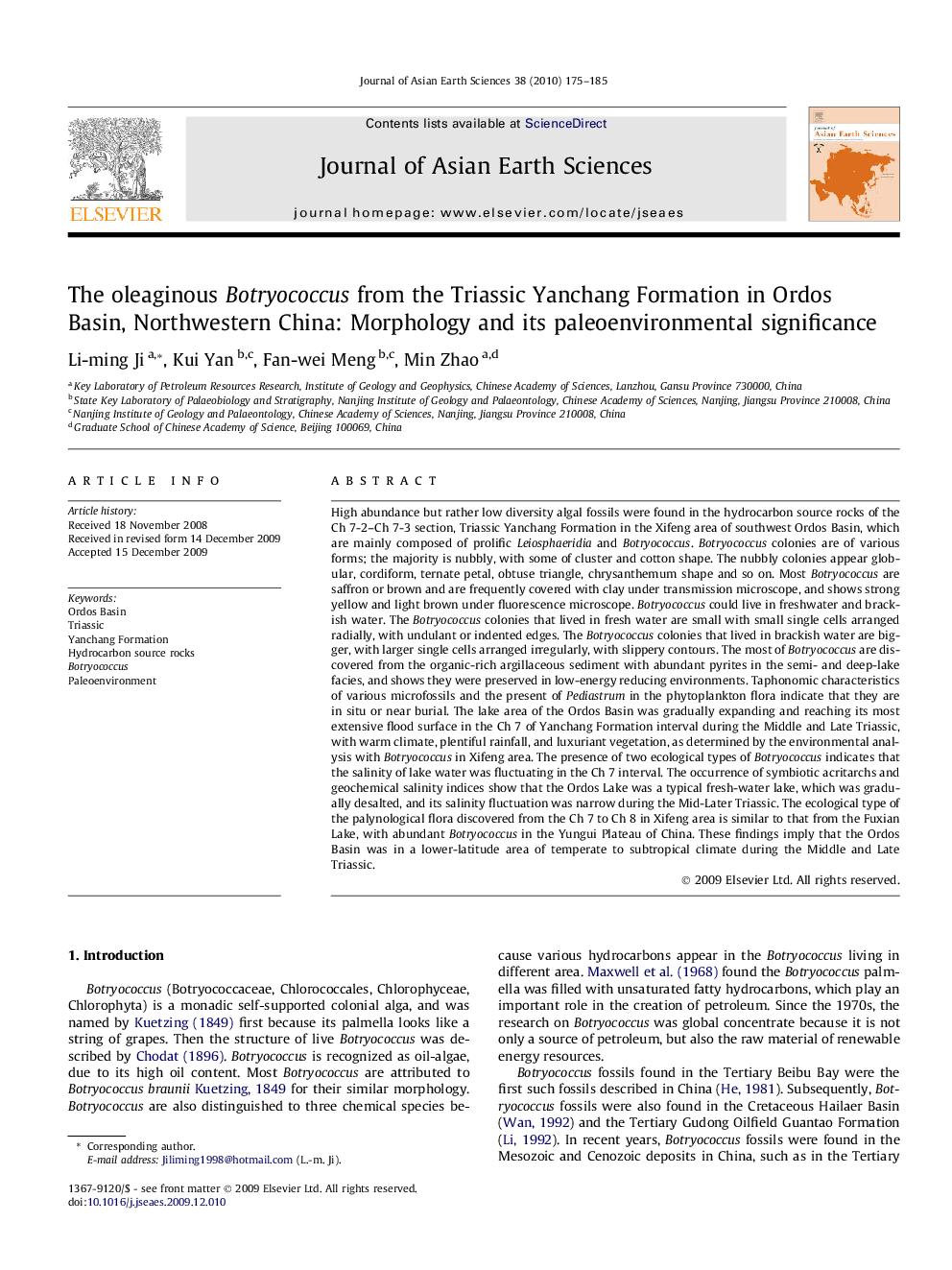| کد مقاله | کد نشریه | سال انتشار | مقاله انگلیسی | نسخه تمام متن |
|---|---|---|---|---|
| 4731949 | 1356831 | 2010 | 11 صفحه PDF | دانلود رایگان |

High abundance but rather low diversity algal fossils were found in the hydrocarbon source rocks of the Ch 7-2–Ch 7-3 section, Triassic Yanchang Formation in the Xifeng area of southwest Ordos Basin, which are mainly composed of prolific Leiosphaeridia and Botryococcus. Botryococcus colonies are of various forms; the majority is nubbly, with some of cluster and cotton shape. The nubbly colonies appear globular, cordiform, ternate petal, obtuse triangle, chrysanthemum shape and so on. Most Botryococcus are saffron or brown and are frequently covered with clay under transmission microscope, and shows strong yellow and light brown under fluorescence microscope. Botryococcus could live in freshwater and brackish water. The Botryococcus colonies that lived in fresh water are small with small single cells arranged radially, with undulant or indented edges. The Botryococcus colonies that lived in brackish water are bigger, with larger single cells arranged irregularly, with slippery contours. The most of Botryococcus are discovered from the organic-rich argillaceous sediment with abundant pyrites in the semi- and deep-lake facies, and shows they were preserved in low-energy reducing environments. Taphonomic characteristics of various microfossils and the present of Pediastrum in the phytoplankton flora indicate that they are in situ or near burial. The lake area of the Ordos Basin was gradually expanding and reaching its most extensive flood surface in the Ch 7 of Yanchang Formation interval during the Middle and Late Triassic, with warm climate, plentiful rainfall, and luxuriant vegetation, as determined by the environmental analysis with Botryococcus in Xifeng area. The presence of two ecological types of Botryococcus indicates that the salinity of lake water was fluctuating in the Ch 7 interval. The occurrence of symbiotic acritarchs and geochemical salinity indices show that the Ordos Lake was a typical fresh-water lake, which was gradually desalted, and its salinity fluctuation was narrow during the Mid-Later Triassic. The ecological type of the palynological flora discovered from the Ch 7 to Ch 8 in Xifeng area is similar to that from the Fuxian Lake, with abundant Botryococcus in the Yungui Plateau of China. These findings imply that the Ordos Basin was in a lower-latitude area of temperate to subtropical climate during the Middle and Late Triassic.
Journal: Journal of Asian Earth Sciences - Volume 38, Issue 5, 1 May 2010, Pages 175–185